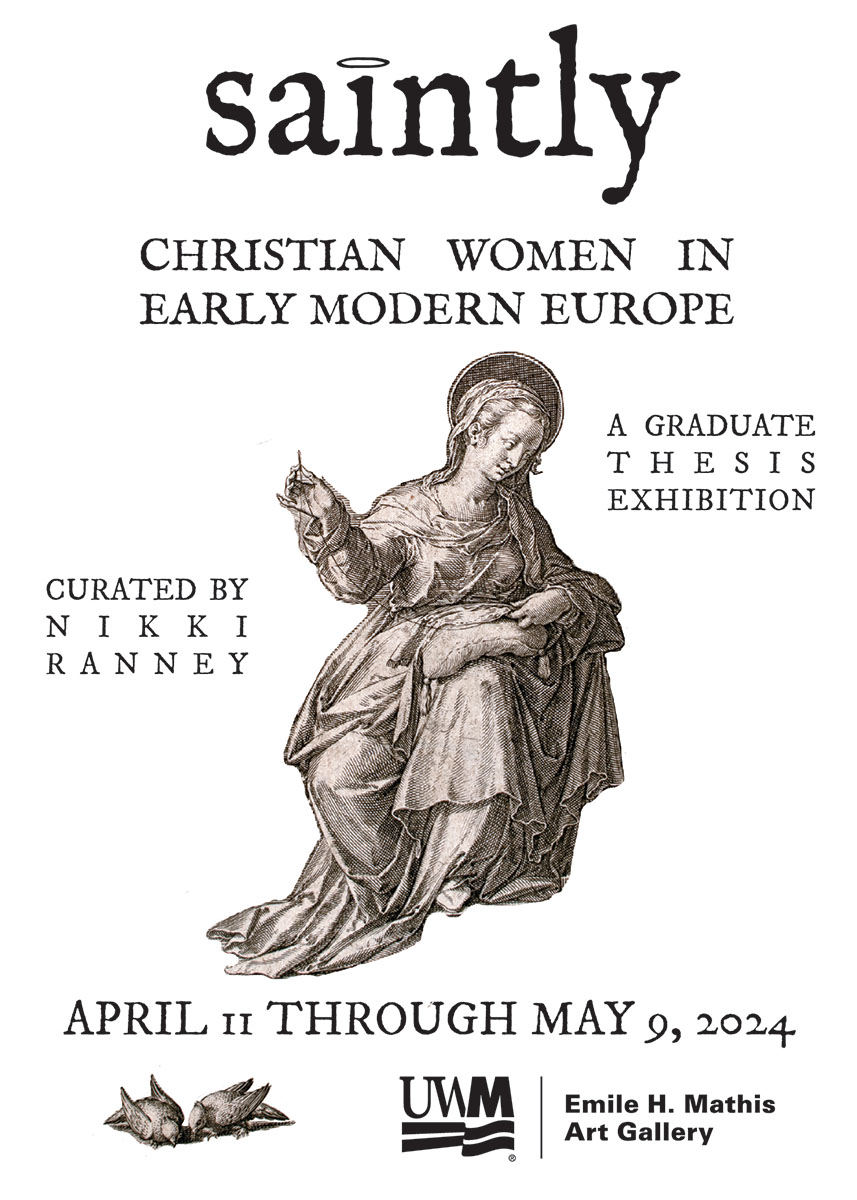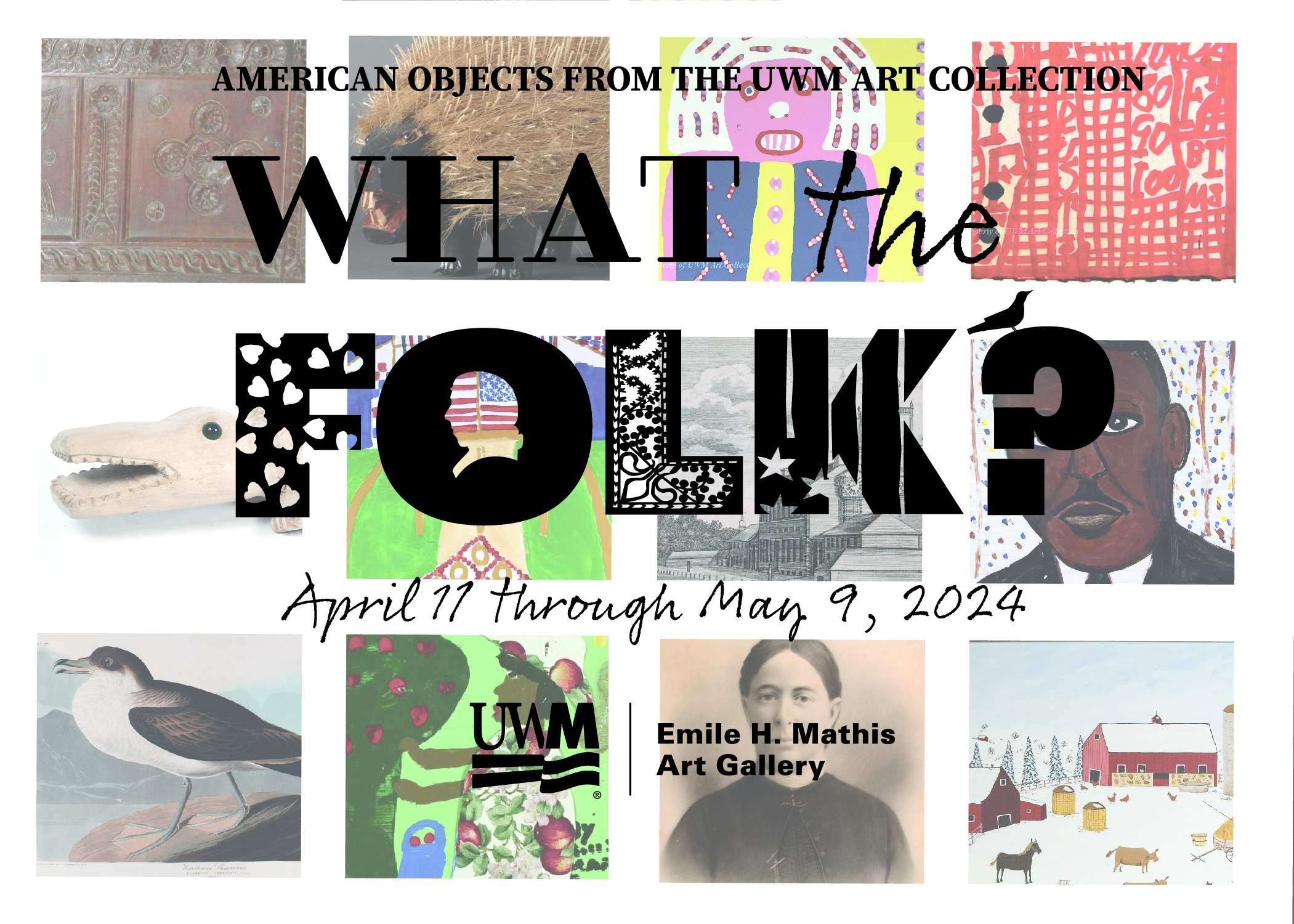Saintly: Christian Women in Early Modern Europe, showcases our unique opportunity for students to complete a Master’s Thesis in the form of an exhibition. Saintly explores the relationship between laywomen and holy women from the Christian canon by examining depictions of the Virgin Mary and Women Saints in works from the 16th through 18th centuries. Curated by graduate student Nikki Ranney, this thesis exhibition brings perspective to the religious lives of women during this period and the expectations to which they were subjected.
April 11 through May 9, 2024
Opening Reception: April 11th from 5 to 7pm with curator remarks at 5:30pm
UWM Emile H. Mathis Gallery
Mitchell Hall 170
3203 N. Downer Ave.
Milwaukee, WI 53211

